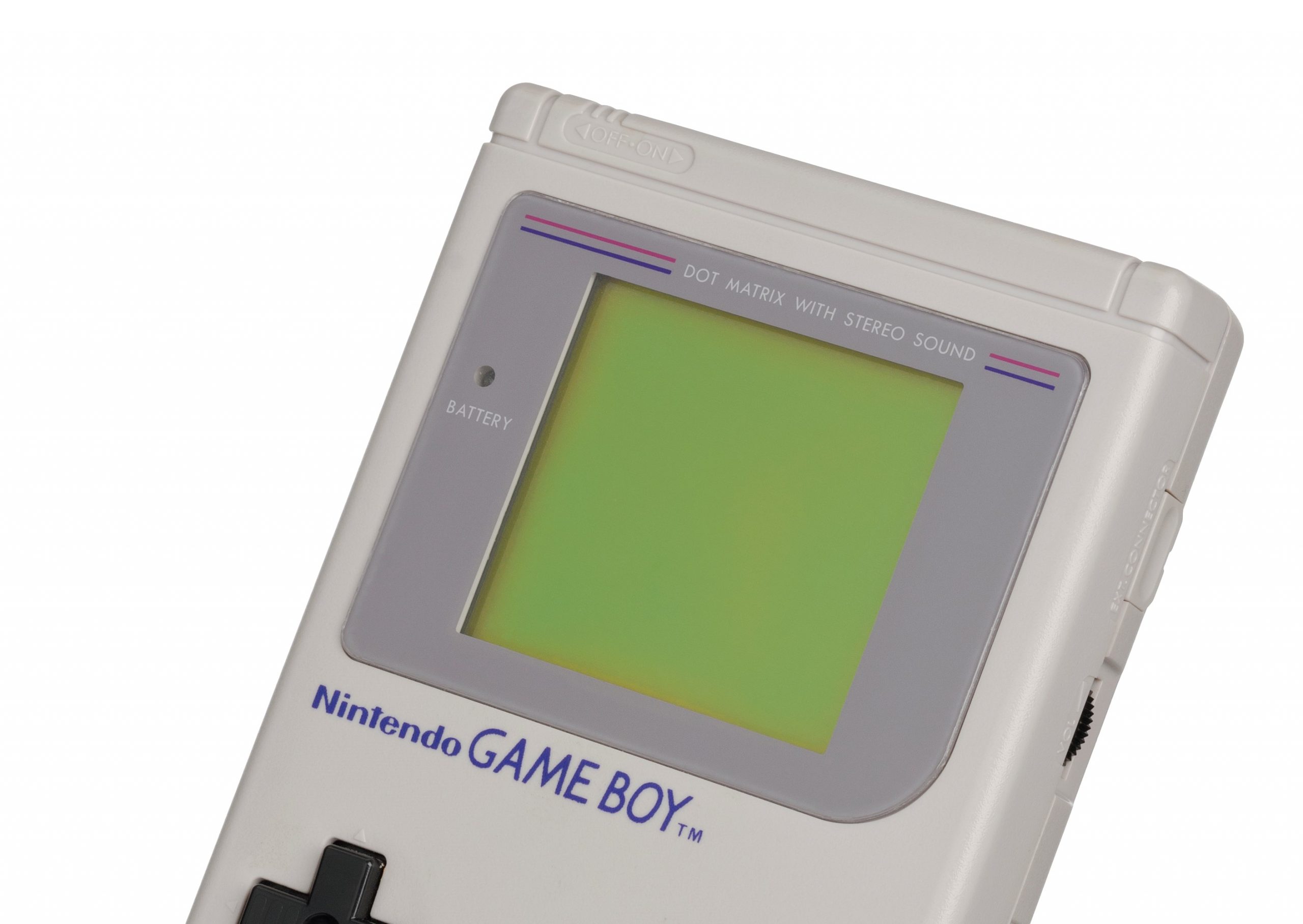
The Game Boy is a vital part of Nintendo’s console history and 2024 marks another major anniversary for this game-changing product. Just like any console, the Game Boy could be equipped with an array of useful and utterly bizarre accessories. These carefully crafted additions were often made in conjunction with Nintendo itself and were always created to solve a very specific problem. Many of these accessories have been forgotten, but at the time of their release, they were both useful and innovative.
These days, there’s not as much need for so many accessories, as consoles come built with many of these features already. But the Game Boy was elevated by these genius products, most of which were continuously improved upon and re-released with upgrades.
Game Boy Link Cable (1989)
The Game Boy initially launched in 1989 and Nintendo was immediately looking to problem-solve. The company knew players would want to play against one another and researched ways that multiple Game Boys could interact. Thus, alongside the launch of the first console, the Game Boy Link Cable, also known as the Game Link Cable, was released.
The cable simply linked two Game Boys, allowing compatible games, which were denoted by a Game Link logo, to connect. The very first Game Boy Link Cable was a notable accessory in the console’s history, and it would be one of the few products that garnered its own upgrades. Multiple versions have since been released, with each cable generation becoming sturdier, more streamlined, and compatible with other consoles. The technology and approach to the problem have been continuously improved, and Nintendo even came out with cross-console cables that allowed the likes of the Game Boy and the Game Boy Color or Pocket to link up.
It’s also worth noting that the Game Boy Four Player Adapter was also released as a hub to connect multiple link cables to, to create a larger multiplayer experience. But with only a select few games able to support so many players, this was not an accessory with long-term sustainability. The value of these accessories might be doubted today, but in an era where online multiplayer gaming wasn’t what it has become, these additions were incredibly well-received. The Game Link cables carried on far into the future, with even the GameCube, Game Boy Advance, and then the Wii connecting up thanks to the development of this concept.
Game Genie (Unknown Release Date, Early 1990s)
The very first Game Genie, developed by Codemasters and distributed by Galoob, was released in 1990 based on the NES. It seemed that no others would be released after this though, with Nintendo attempting to sue the company and halt production altogether. After an intense court case, the NES Game Genie was proclaimed to not be based on derivative work and thus new models followed.
The Game Boy Game Genie was amongst the first to do so. The Game Genie is one of the few accessories featured here that was not made in conjunction with Nintendo because of that conflict and the fact that it had a very different purpose in mind. The Game Genie was designed as a device that connected a console and a cartridge together in ways that allowed players to cheat!
These days modding and cheats are a huge part of the gaming community and there’s always been a history of developing shortcuts. The Game Boy version of the Game Genie was largely used with just the original variation of the console. Users would enter a series of codes, which would produce effects like dishing out extra lives, ammunition, or level skipping. New codes were often delivered to users and there was even a payable service that guaranteed different cheats across the calendar year. While many might disagree with the sentiment of such an accessory, it was certainly popular and holds a vital place in Game Boy’s timeline as a device designed to disrupt.
Handy Boy (1990)
The Handy Boy was so hyperbolic in its promises. It could seemingly do it all! It would amplify the sound with new speakers, and magnify the screen allowing for a clearer picture. It added joysticks to the Game Boy and even illuminated the device with a simple light. This strange contraption clipped onto the Game Boy bringing all of these odd features into play and ultimately adding to the gaming experience. It was certainly clunky as a concept but it’s a notable accessory for its sheer brashness and ambition.
The Handy Boy could be folded up to make it easy to transport, and had a couple of clip-on extras meaning a player didn’t have to use all of the accessories at once. The product certainly had a lot going on and advertisements at the time of its release boasted about the irreplaceable all-in-one package. The piece was manufactured by STD and was high quality in its detail. Ultimately, it might not have been a necessary purchase, but it’s a standout in Game Boy’s history which should be celebrated for its attempt to improve the interface.
Barcode Boy (1992)
Did you know the Game Boy was able to read barcodes? Back in the early 90s, NAMCO created this unusual accessory which was attached to the Game Boy handheld device. This was a leap in technology once more, but one that didn’t have a universal use. It was only released in the Japanese market but was integral to a few experimental games. Some titles came with cards that could be scanned with the Barcode Boy allowing players to access unique in-game features.
A classic example was Monster Maker: Barcode Saga which was designed with the accessory in mind. Players were able to customize and battle thanks to the codes the scanner picked up. It’s interesting to see how far Nintendo and NAMCO could have taken this idea, especially as new products could be sold that brought additional content to games via these scannable cards. If the Barcode Boy was compatible with Pokémon cards for example, then the device would have really taken off. Alas, this was an instance of a great product at the wrong time, and that lack of support means it has been forgotten despite its potential.
The Super Game Boy (1994)
Compatibility has always been a major part of Nintendo’s history with the company constantly looking for ways to allow players to link their devices together. While the Game Boy might have launched in 1989, the Super Nintendo Entertainment System or SNES would arrive in 1990, and there was an immediate desire to see how those two consoles could complement one another. Thus, the Super Game Boy was born in 1994, an accessory that allowed Game Boy games to actually be played on the SNES. This addition was massive for fans, who were able to take their rich gaming collection from one platform to the other, unlocking a huge archive of beloved titles.
The device took the cartridges of the Game Boy, Game Boy Color, and even Game Boy Camera, and placed those games into the SNES, with all of its benefits. Some games like Donkey Kong or Toy Story were elevated with additional effects, thanks to the SNES’ superior hardware. Plus, there was the possibility of 2-player action with the use of an additional Super NES controller.
Later down the line, the Super Game Boy 2 was released with a few upgrades such as making a two-player link more accessible, but this was only available in Japan. The Japanese audience also received a Super Game Boy controller from Hori, which contained a couple of new buttons that modified sound and image elements.
Game Boy Pocket Sonar (1998)
Why would anyone need a sonar for their Game Boy? To go fishing of course! In 1998 Bandai created a one-of-a-kind product that no one would have expected to join the array of Game Boy accessories. The Game Boy Pocket Sonar was the first ever gaming accessory to utilize sonar in its mechanics. That breakthrough was employed to help people locate fish! The Game Boy screen doubled as a fantastic device that used sonar to detect where fish were present, making it easier for fisherpeople to go about their hobby.
Because it didn’t exactly have widespread appeal (especially in the gaming community), the Game Boy Pocket Sonar was only released in Japan. However, gamers might have wanted to get their hands on this product because it boasted its own minigame. To match the theme, a simplistic title accompanied the sonar, encouraging players to catch fish in the digital world. This might be a bizarre bit of kit, but it did signify an unexpected hardware advancement, which could have been used in a huge variety of ways!
It’s rare to get hold of now but is all the more notable for its place in Game Boy history. It was, after all, another entry into an unusual technological movement, where companies would experiment with Game Boy accessories that had real-world uses. The Game Boy Sewing Machine and Radio Tuner are two noteworthy examples, which genuinely worked just like the Sonar, but didn’t have much of a gaming purpose!
Game Boy Camera (1998)
Compatible with the whole of the Game Boy line (besides the Game Boy Micro), the Game Boy Camera did exactly as the name suggests. The accessory could astoundingly capture a grayscale image, allowing users to edit the picture with in-console technology. The camera attached to the Game Boy and could swivel to capture images from all directions.
Gamers could even take selfies on the device, years before the term was popularized. The camera had plenty of limitations, but with the use of Mario Artist which was able to interact with the device, users had a great deal of fun exploring the camera’s features.
Just like the Game Boy Pocket Sonar, the Nintendo accessory was also accompanied by a range of minigames. These small-scale titles paid homage to classic Nintendo gaming, and included Space Fever II, Ball, DJ, and Run! Run! Run! While a planned Hello Kitty iteration of the device never made it to market, the Game Boy Camera continued production until 2002. From the PlayStation 2’s EyeToy to the Xbox One’s Kinect, camera accessories have become a major part of console history. But the Game Boy Camera, as flawed as it may have been, helped to pave the way for those later developments.
Game Boy Printer (1998)
What’s a camera without a printer? Predicting that players might wish to print off the pictures that they had taken with the Game Boy Camera, the Game Boy Printer was also released by Nintendo to act in conjunction with the camera accessory.
The thermal printer required thermal printing paper to work which could be purchased in just a few colors. While the idea of a printer that needed to be connected to the camera might appear to be limited, the device was also compatible with a long list of games, allowing players to print off unusual images.
From Pokémon Crystal to NFL Blitz, Mission: Impossible to Disney’s Tarzan, the range of games that could interlink with the Game Boy Printer was completely random. It might have been tricky to operate, especially when loading in the thermal paper, but the Game Boy Printer was a great accessory to experiment with. These days that unique Nintendo printing paper has been discontinued and thus it is harder to find a version of this product that is usable as was initially intended. The accessory is now very much of its time, but there’s a sense of nostalgia attached to the memories that were made with the combination of the Printer and the Camera.
Transfer Pak (1998)
Nintendo may have been promoting accessibility across the Game Boy consoles and in line with the SNES, but there was also the Nintendo 64 to consider. The Transfer Pak was created by Nintendo to transfer data from one console to the other.
The Transfer Pak was able to connect up with the Nintendo 64 controller to then collaborate with the Game Boy or Game Boy Color. Certain titles were specifically designed to make the most of this feature, with additional content getting unlocked through the process. It’s the Pokémon series that most players will remember getting the best use out of this system, with the device even sold alongside Pokémon Stadium upon its original release.
Mario Golf, Mario Artist, Perfect Dark, and Puyo Puyo~n Party are just a few other examples of those titles that benefited from the Transfer Pak. This wasn’t an elegant solution by any means, but it got the job done. It’s a shame a longer list of games couldn’t have been made compatible, and long-term the device became almost obsolete. But as an idea, it was bold and matched Nintendo’s ideology of being able to interlink all of its products. It’s thus a notable accessory because of its ability to cross between platforms, but that idea was perfected in later Nintendo console releases.
Mobile Phone Adapter (2001)
In an exciting move, Nintendo teamed up with Mobile21 in Japan to create the Mobile Game Boy Adapter, a device that linked up to a range of mobile phone types. The adapter was compatible with the Game Boy Color, Game Boy Advance, and Advance SP. It was a complicated piece of kit that eventually required different cables which were sold separately, to increase the variety of phones that the device could be connected with. The adapter came with the Mobile Trainer cartridge to make the device actually usable.
The most interesting part of this design was the use of an online network, known as Mobile System GB. This now out-of-use service allowed for wireless play and it was a natural predecessor to some of Nintendo’s later developments in that field. Just like so many of Nintendo’s other accessories, it was the Pokémon game series that got the most use out of the Mobile Phone Adapter, and the device was adopted by a younger generation of players.
Mobile games and apps were in their early stages of development at the time, so the Mobile Phone Adapter was an invention far ahead of its era! However, due to that younger target market, the adapter didn’t massively sell, because that generation wasn’t accessing mobile phones quite like modern youths. Ultimately, the product was simply aimed at the wrong people!
The post The History and Evolution of Game Boy Accessories appeared first on Den of Geek.






